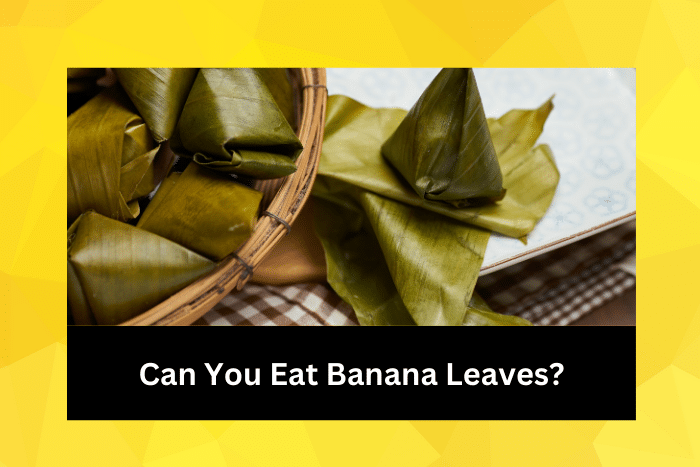Although they don’t look very appetizing, can you eat banana leaves?
You may have seen them used as a plate in some Asian-style or Indian restaurants.
Or perhaps read that you can wrap some food items in the leaves before cooking the parcel.
Surely they can’t be toxic; otherwise, why risk them being so close to your food?
If you can eat banana leaves, do they have any health benefits?
What do they taste like?
Let’s nibble at the truth about eating banana leaves!
Banana leaves are not only edible but have several health benefits. The leaves contain polyphenols which are known to be antioxidants. When food is placed on the leaves, it can absorb the polyphenols, taking them into the digestive system. Banana leaves also have anti-bacterial properties. They can be used for wrapping chicken and fish prior to cooking and add an earthy flavor to any dish. The leaves are often used to serve food in the eastern and southern parts of India, thus being an economical and eco-friendly alternative to a plate. However, the large amount of fiber in banana leaves makes them difficult to digest.
Are Banana Leaves Poisonous?
You may have seen banana leaves being used as a plate to serve food.
This is particularly popular in some parts of India.
But what happens if you accidentally eat some of the leaves?
Don’t worry; they are not poisonous, and banana leaves are actually good for you.
The leaf contains polyphenols, and these are anti-oxidants, good for your health.
And you don’t actually even have to eat the leaf, as any food served on it will absorb some of the polyphenols.
The leaves can also be used to wrap food such as chicken or fish before cooking.
They will impart an unusual but tasty, earthy flavor to the food.
Banana leaves are also said to be anti-bacterial, and their waxy coating stops any dirt or germs from clinging to them.
A simple rinse with clean water is all that is required before using them.
Using a banana leaf as a plate is eco-friendly as they decompose quickly and don’t add to the plastic waste problem.
However, there is a major downside to eating banana leaves.
They contain a huge amount of natural fiber, making them very difficult to digest.
In fact, you may struggle to even be able to chew them, especially raw banana leaves.

Can You Eat Other Parts of a Banana Plant?
So, if we can eat banana leaves, although with some digestive difficulty, what about the rest of the plant?
Can banana flowers and the stem be eaten?
So, let’s start with the banana flower, and yes, it can be consumed raw or cooked.
Banana flowers can be added to soups or salads or mixed with vegetables in a popular Indian dish called Sabzi.
The taste of the flower is quite bitter, so it is best to soak it in lemon juice before using it.
Banana flowers contain a lot of beneficial vitamins and minerals such as vitamin C, protein, calcium, iron, and potassium.
They are said to help with menstrual cramps.
The banana stems are often used in Asian cuisine, particularly in stir-fries.
But again, they do contain a lot of fiber which is tricky to digest and may lead to bloating and gas.
On the bright side, they contain vitamin B6 and potassium, helping to deal with high cholesterol and high blood pressure.
Banana stems can be used as a diuretic and to treat kidney stones.
Please consult your physician before using any part of the banana plant for medicinal purposes.
Preparing Banana Leaves
Final Thoughts
Banana leaves can be eaten raw or cooked, but their huge fiber content makes them difficult to digest.
They contain polyphenols which are good for your health.
Both the banana flowers and the stem can be eaten and have several benefits.
They are a good source of vitamins and minerals.
So, if you fancy eating something new, then give the different parts of the banana plant a try, but exercise caution and just have a small taste first, and watch for any adverse reactions.
Something else you may also have wondered about is whether you can eat cooking bananas in their raw state.
